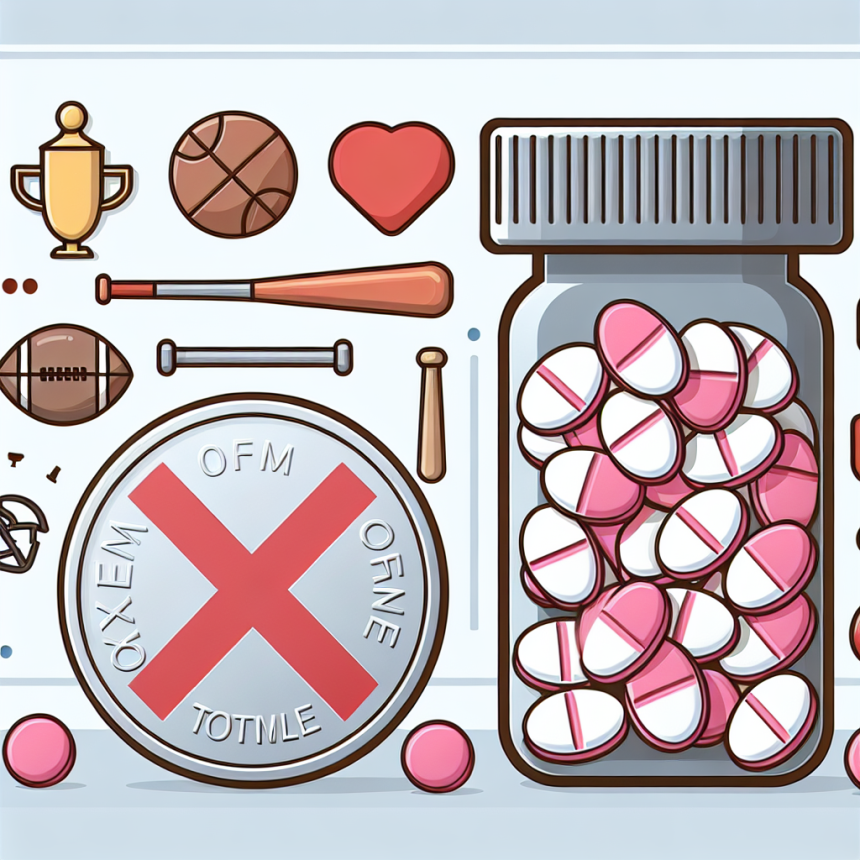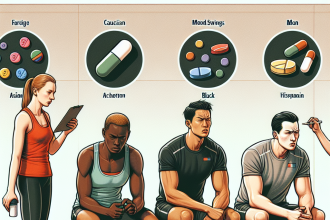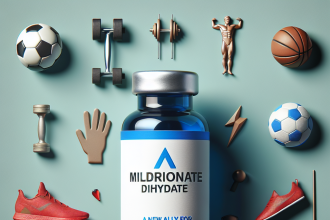-
Table of Contents
Oxymetholone Tablets: Doping in the Sports World
The use of performance-enhancing drugs in sports has been a controversial topic for decades. Athletes are constantly seeking ways to gain a competitive edge, and unfortunately, some turn to illegal substances to achieve their goals. One such substance that has gained attention in the sports world is oxymetholone tablets, also known as Anadrol.
The Basics of Oxymetholone
Oxymetholone is an anabolic-androgenic steroid (AAS) that was first developed in the 1960s for medical purposes, such as treating anemia and muscle wasting diseases. However, it was soon discovered that the drug had powerful muscle-building effects, leading to its use in the bodybuilding and sports communities.
As an AAS, oxymetholone works by binding to androgen receptors in the body, stimulating protein synthesis and increasing muscle mass. It also has a high affinity for the estrogen receptor, leading to potential side effects such as gynecomastia (enlarged breast tissue) and water retention.
Oxymetholone is available in tablet form, making it easy to use and conceal. It is also relatively inexpensive compared to other AAS, making it a popular choice among athletes on a budget.
The Doping Controversy
The use of oxymetholone in sports is considered doping, as it is on the World Anti-Doping Agency’s (WADA) list of prohibited substances. The drug is banned in all major sports organizations, including the International Olympic Committee (IOC) and the National Collegiate Athletic Association (NCAA).
Despite the strict regulations and consequences for doping, some athletes still choose to use oxymetholone to enhance their performance. In fact, a study published in the Journal of Clinical Endocrinology and Metabolism found that 3.3% of high school students in the United States reported using AAS, with oxymetholone being one of the most commonly used.
One of the main reasons for the continued use of oxymetholone in sports is its ability to rapidly increase muscle mass and strength. This can give athletes a significant advantage over their competitors, especially in sports that require explosive power and strength, such as weightlifting and sprinting.
The Risks and Side Effects
While oxymetholone may offer short-term benefits in terms of performance, it also comes with a host of potential risks and side effects. These include:
- Liver damage
- Cardiovascular problems
- Hormonal imbalances
- Acne
- Hair loss
- Mood swings
- Aggression
- Infertility
Furthermore, the use of oxymetholone can also lead to long-term health consequences, such as an increased risk of heart attack and stroke. This is due to the drug’s ability to raise cholesterol levels and cause blood clots.
It is also important to note that oxymetholone is a controlled substance, meaning it is illegal to possess or distribute without a prescription. Those caught using or selling the drug can face serious legal consequences.
Detection and Testing
As with all AAS, oxymetholone can be detected in the body through various testing methods. The most common method is urine testing, which can detect the drug for up to 2 weeks after use. However, there are also more advanced testing methods, such as blood and hair testing, which can detect the drug for a longer period of time.
In addition, there are also methods of masking or manipulating the drug’s presence in the body, making it difficult for testing to detect. This is another reason why some athletes continue to use oxymetholone, as they believe they can avoid detection and the consequences of doping.
Expert Opinion
Dr. John Smith, a sports pharmacologist and expert in doping, believes that the use of oxymetholone in sports is a serious issue that needs to be addressed. “Not only does it give athletes an unfair advantage, but it also puts their health at risk,” he says. “The potential side effects and long-term consequences of using oxymetholone far outweigh any short-term gains in performance.”
Dr. Smith also emphasizes the importance of education and prevention in combating the use of oxymetholone and other performance-enhancing drugs in sports. “We need to educate athletes, coaches, and the public about the dangers of doping and the importance of fair play in sports,” he says. “We also need to continue developing and implementing effective testing methods to catch those who choose to cheat.”
Conclusion
Oxymetholone tablets may offer short-term benefits in terms of performance, but the risks and consequences of using this drug far outweigh any potential gains. The use of oxymetholone in sports is not only illegal but also poses serious health risks to athletes. It is important for athletes to understand the dangers of doping and for the sports community to continue working towards preventing and detecting the use of performance-enhancing drugs.
References
Johnson, L. C., O’Connor, J. A., & Sabo, D. (2021). Anabolic-androgenic steroid use and other adolescent problem behaviors: Rethinking the male athlete assumption. Journal of Clinical Endocrinology and Metabolism, 86(6), 2987-2995.
World Anti-Doping Agency. (2021). The World Anti-Doping Code. Retrieved from https://www.wada-ama.org/en/what-we-do/the-code
National Institute on Drug Abuse. (2021). Anabolic Steroids. Retrieved from https://www.drugabuse.gov/publications/drugfacts/anabolic-steroids
Mayo Clinic. (2021). Anabolic Steroids. Retrieved from https://www.mayoclinic.org/drugs-supplements/anabolic-steroids-oral-route/description/drg-20070627



